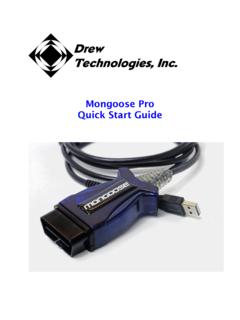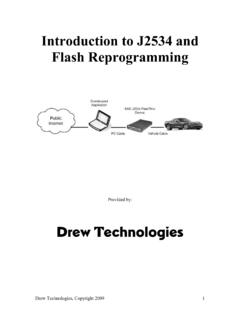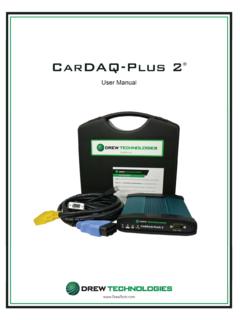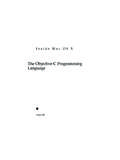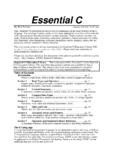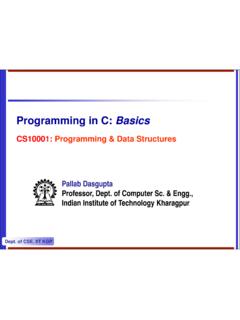Transcription of A Coding Standard for the C Programming Language
1 DREW TECHNOLOGIES, INC. Page 1 of 30 October 22, 1999 Project Notebook Storage Location: Drew Technologies Corporate Library A Coding Standard for the C Programming Language Drew Technologies Inc. Copyright 1996,1999 Contact: DrewTechnologies, Inc. 41 Enterprise Drive Ann Arbor, MI 48103 (734)623-8080 DREW TECHNOLOGIES, INC. October 22, 1999 Drew Technologies, Inc. Proprietary Page 2 of 30 Revision History DATE COMMENTS 04-Sep-96 Final Draft 22-Oct-99 English corrections, address update DREW TECHNOLOGIES, INC. October 22, 1999 Drew Technologies, Inc.
2 Proprietary Page 3 of 30 TABLE OF CONTENTS 1. Introduction_____5 Scope_____5 References_____5 2. Process Problem_____5 3. Root Causes and Effects_____6 Poor Maintainability_____6 Poor Portability / Reusability_____7 Arguments for Efficiency_____7 4. Recommendations_____8 General Naming Conventions_____8 Naming Variables_____8 Naming Functions_____10 Naming Structures & Structure Members_____10 Naming Constants Macros & Typedefs_____10 Indentation_____11 Indentation of Basic Flow Control Statements_____11 Simple If Statement_____11 Compound If Statement_____12 For Statement_____13 While Statement_____13 Indentation of Switch Statements_____14 Indentation of Structures and Unions_____16 Parenthesis_____17 Comments_____18 Preprocessor Directives_____18 Program Structure_____18 Module Layout_____19
3 Dead Code_____20 Include Files_____21 Module Header_____23 Function Header_____24 White Space_____24 Low Level Data Abstraction_____24 Compiler and Processor Dependence_____25 Hardware Platform Dependence_____25 DREW TECHNOLOGIES, INC. October 22, 1999 Drew Technologies, Inc. Proprietary Page 4 of 30 Unit Test Code_____27 Efficiency_____28 5. Conclusions_____28 6. Appendix A_____29 7. Appendix B_____30 DREW TECHNOLOGIES, INC. October 22, 1999 Drew Technologies, Inc. Proprietary Page 5 of 30 1. Introduction This document is proposed as the Coding Standard for all C programs written by Drew Technologies that are not required to follow an external Coding Standard specified by the customer.
4 Scope This document is a collection of rules and guidelines that include issues related not only to the C Language , but also software engineering and program portability in general. The scope of this document is such that it is most effective when applied at the earliest stages of Coding . Most if not all of the concepts and practices proposed in this document can be applied to the maintenance of code that does not conform to this Standard . References Harbison, ,1991, C A Reference Manual, Prentice Hall Inc. ANSI,1989, American National Standard Oualline, S.
5 ,1992, C Elements of Style, M&T Books Inc. Libes, , Obfuscated C and Other Mysteries, John Wiley & Sons Inc. 2. Process Problem Without a Coding Standard in place, there is no framework through which we can: Enforce good structured Programming practices Provide a reference for code walkthroughs and inspections Make code easier to understand and maintain DREW TECHNOLOGIES, INC. October 22, 1999 Drew Technologies, Inc. Proprietary Page 6 of 30 3. Root Causes and Effects It is possible to write hopelessly obscure code in any Language . The C Programming Language has some very powerful features, which can be misused to make programs hard to understand, and do things that are widely recognized as bad software engineering.
6 Any process put into place must minimize the likelihood that this will occur. The effects of this problem can be broadly separated into the following categories: Poor maintainability Poor portability Poor Reusability Poor Maintainability Understanding is at the heart of maintainability. If a piece of code is difficult to understand, it is difficult to maintain. Factors that contribute to making code hard to understand include the following: No discernible naming conventions for identifiers No discernible indenting conventions used Poor use of parenthesis Poor use of comments Overuse of conditional preprocessor directives Poor program structure Poor module layout Excessively long functions Excessively optimized code Inclusion of dead code Overuse of nested includes Lack of module header Lack of function header Poor use of white space DREW TECHNOLOGIES, INC.
7 October 22, 1999 Drew Technologies, Inc. Proprietary Page 7 of 30 Poor Portability / Reusability All software developers should be concerned with portability and reusability issues as they write code. Factors contributing to a lack of portability and reusability include the following: Compiler dependence Processor dependence Hardware platform dependence Lack of low level data abstraction Lack of unit test code This lack of portability prevents us from: Being able to unit test code on non-target platforms (SUN or IBM-PC) Reacting quickly to changes in the market (New chips and compilers) Using CASE tools to evaluate/manage our code Arguments for Efficiency Arguments for efficiency are often used in defense of code that is not maintainable, portable or reusable.
8 Efficiency must be addressed in manner consistent with good engineering practices. DREW TECHNOLOGIES, INC. October 22, 1999 Drew Technologies, Inc. Proprietary Page 8 of 30 4. Recommendations General Naming Conventions Naming conventions serve two purposes. First, they provide consistency throughout the program. Second, since identifiers are by far the bulk of any program, they should have an aesthetic quality that makes them easy to read. Words separated by underscores satisfy both of these requirements. Underscores can easily be used in a consistent manner to separate the individual words in an identifier.
9 The use of the underscore evolved from a desire to use a character that resembles a space, as closely as possible. People are comfortable with the aesthetics of using underscores between words because underscores resemble spaces. The ANSI C spec requires that all compilers permit a minimum of 31 significant characters in identifiers. Most compiler vendors meet or exceed this limitation. While every attempt should be made to impart meaning to identifiers by using long names, KNOW YOUR COMPILER! Due to linker or system limitations extern or global data may be limited to something less than a full 31 characters.
10 Naming Variables The first and foremost requirement of a variable name should be that it convey at least some meaningful information about the how the variable being declared is going to be used. Examples of bad variable declarations include: int i; /* Index into array */ int x; /* Sum of last 10 samples */ int *ts; /* Pointer to timestamp */ In the preceding declarations, comments are used to help explain to the reader how these variables will be used in the program. These comments would not be required if the variables were changed to: int index; int sum_of_last_10; int *ptr_to_timestamp; The challenge is to pick variable names that help to make your code self documenting without the use of comments.
